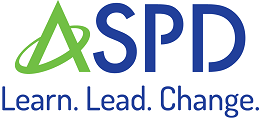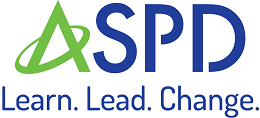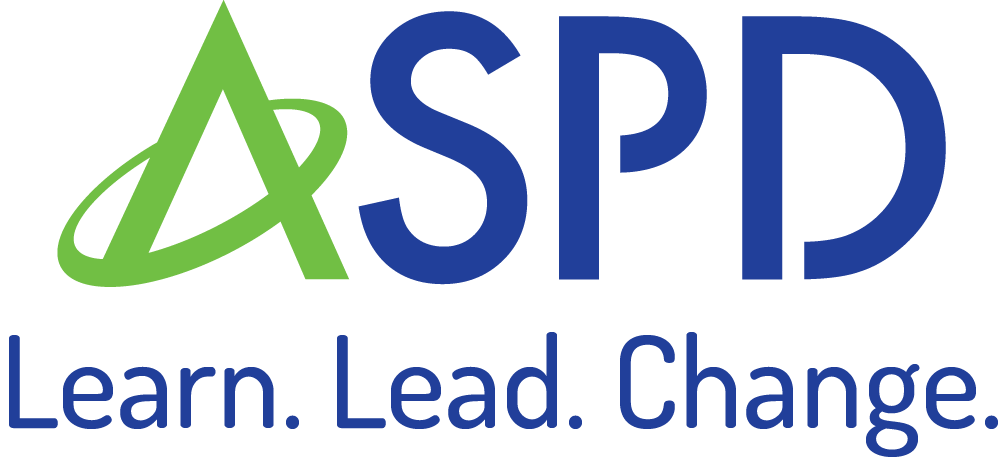STAGES OF ENGLISH LANGUAGE DEVELOPMENT
level 3
Speech Emergence
At this stage, language learners begin forming longer phrases and simple sentences. Their oral vocabulary is growing, and they are able to participate more actively in conversations with peers and teachers. They may respond to questions with phrases or short sentences rather than isolated words.
A key feature of this stage is increased risk-taking in communication. Students demonstrate a willingness to attempt new words and sentence structures, signaling their growing confidence in expressing themselves in English across settings.
By the end of this level, students still make frequent errors with grammar, syntax, and word choice, but they demonstrate a clearer ability to express ideas, opinions, and needs. Reading and writing skills are also emerging, with learners able to understand and produce short, simple texts.
Details: Level 3 - Speech Emergence
General Overview
In the Speech Emergence stage, students' comprehension of English significantly improves. They begin to speak in longer phrases and simple sentences, though grammatical errors are still common and can sometimes interfere with meaning. Their vocabulary increases (around 3,000 active words), and they can participate more actively in classroom discussions and social interactions. They are starting to read and write more complex texts with support. This stage can last one to three years.
Scenario
Student: Dmytro, Grade 9
Background: Dmytro arrived from Ukraine six months ago due to the ongoing occupation and is now living with his aunt and uncle. He was a strong student in Ukraine, particularly in history and science, and attended school regularly until about two years ago when disruptions became frequent. He had some English classes in Ukraine but with limited conversational practice. He is motivated to learn and succeed but is also dealing with the trauma of displacement and concern for family still in Ukraine.
Classroom Experience: In his World History class, the teacher is discussing ancient civilizations. Dmytro is fascinated, as this was a topic he enjoyed in Ukraine. He can follow most of the lecture, especially when the teacher uses maps and images. When the teacher asks, "Why do you think early settlements often developed near rivers?" Dmytro has an idea. He thinks in a mix of Ukrainian and English: "Річки давали воду... transport... and good soil... як це сказати?" He raises his hand. "People need water for... drink," he begins, a little hesitantly. "And... river good for... boats? For... travel. And for farm. Earth good." He might mispronounce "soil" or use a simpler word like "earth." He's aware his sentences aren't perfect, and sometimes he pauses, searching for a word. He feels a surge of satisfaction when the teacher nods and says, "Excellent points, Dmytro! Access to water for drinking, irrigation for farming, and transportation were all key." He sometimes gets frustrated when he can't express the complexity of his thoughts or understand idioms his classmates use. He's starting to join a lunchtime club to practice English in a more relaxed setting, though he's still quite reserved.
Social-Emotional Elements: Dmytro may experience fluctuating confidence. He's eager to show his knowledge but wary of making mistakes in front of peers. He might feel the weight of his past experiences and worry about his future. A supportive environment that values his contributions and understands his linguistic and emotional needs is critical. He might be quiet but is actively processing and learning.
What Students Can Do
- Listening (Input/Processing):
- Can understand longer sentences and more complex spoken language on familiar and some new academic topics, especially with visual aids.
- Can follow multi-step directions.
- Understands main ideas and key details in classroom discussions and presentations.
- May still struggle with idiomatic language and rapid speech.
- Speaking (Output):.
- Words/Phrases: Uses a wider range of vocabulary (around 3,000 words) including some content-specific terms.
- Language Forms: Begins to use past and future tenses, though not always correctly. Uses more conjunctions (and, but, because). Errors in articles, prepositions, and verb conjugations are common.
- Sentence Types: Produces simple and some compound sentences (e.g., "I went to the store and I bought milk."). Can ask simple questions (who, what, where, when, why, how).
- Discourse: Can participate in conversations, retell simple stories, explain, and describe with some detail. May hesitate or rephrase frequently.
- Reading (Input/Processing):
- Can read and understand simple narrative and expository texts on familiar topics with some support.
- Can identify main ideas and supporting details in appropriately leveled texts.
- Developing decoding skills and fluency. Benefits from graphic organizers and pre-reading activities.
- May struggle with abstract concepts and complex sentence structures in text.
- Writing (Output):
- Words/Phrases: Uses a growing vocabulary in writing.
- Language Forms: Attempts more complex grammatical structures with frequent errors. Word order may still be inconsistent.
- Sentence Types: Can write simple and some compound sentences. Begins to organize ideas into short paragraphs.
- Discourse: Can write short narratives, descriptions, and simple reports with guidance. Ideas may be clear, but language may be awkward or contain errors.
Instructional Strategies
- Listening: Use graphic organizers for note-taking. Provide outlines of lectures. Encourage active listening by asking clarifying questions. Use videos and audio recordings with transcripts.
- Speaking: Provide sentence starters and stems for academic discussions. Engage in cooperative learning tasks that require speaking. Encourage students to elaborate on their ideas. Allow for think-pair-share activities.
- Reading: Teach reading comprehension strategies explicitly (e.g., summarizing, questioning, predicting). Use adapted texts and bilingual glossaries. Provide opportunities for silent and oral reading.
- Writing: Use graphic organizers to plan writing. Teach paragraph structure. Provide models of different genres. Use peer editing (with guidance) and teacher conferencing. Focus on clarity of ideas first, then grammar.
Students at WIDA's "Developing" level typically:
- Listening/Reading (Interpretive): Understand main ideas and some supporting details in oral or written English on a wider range of familiar and some unfamiliar academic topics, especially with some visual or graphic support. Can follow multi-step instructions. Vocabulary includes general and some specialized words.
- Speaking/Writing (Expressive): Communicate using sentences and series of related sentences to express ideas, narrate, or explain. Can participate in academic discussions on familiar topics. Grammatical errors are still present and may occasionally impede understanding, but communication is generally clear.
WIDA 2020 Resources
These links should open the WIDA 2020 Frameowrk and Standards document to the specified page when clicked. This may not work in all browsers.
| Language Expectations, Functions, and Features | Performance Level Descriptors |
|---|---|
| Gr K (p. 44) | Gr K (p. 57) |
| Gr 1 (p. 64) | Gr 1 (p. 79) |
| Gr 2-3 (p. 86) | Gr 2-3 (p. 101) |
| Gr 4-5 (p. 108) | Gr 4-5 (p. 135) |
| Gr 6-8 (p. 142) | Gr 6-8 (p. 171) |
| Gr 9-12 (p. 180) | Gr 9-12 (p. 209) |
Students at ELPA21 Level 3 demonstrate English language proficiency by beginning to:
- Participate with increasing independence in social and academic conversations and group tasks, with some linguistic support and prompting.
- Understand and use a broader range of general academic and some content-specific vocabulary.
- Comprehend main ideas and key supporting details in oral and written texts of moderate complexity.
- Express ideas and information with more elaborated sentences and connected text, though grammatical inaccuracies and awkward phrasing are evident.
- Produce written texts for various purposes (e.g., summaries, short essays) with developing organization and control of grammar.
ELPA21 emphasizes language use in content areas; at this level, students can engage with many grade-level academic tasks with moderate scaffolding, explicit instruction on language structures, and opportunities to practice academic discourse.
Second Level Information
Linguistic Features
Vocabulary expands to include more academic and content-specific words. Students attempt to use more complex grammatical structures, such as past and future tenses, conjunctions (and, but, so, because), and some modals (can, will). Sentence length and complexity increase. Common errors include subject-verb agreement, pronoun usage, and article usage. Interference from L1 grammar may still be evident.
Common Challenges
Students may struggle with understanding academic texts with dense vocabulary and complex syntax. They might have difficulty with idiomatic expressions and nuanced meanings. Grammatical accuracy in speaking and writing is still developing, and they may be self-conscious about errors. Sustaining coherent discourse, especially in writing, can be challenging.
Nuanced Instructional Adaptations
- Content Differentiation:
- Provide outlines, chapter summaries, or audio versions of texts. This one is also made longer to see how the nested list handles the wrapping with the defined CSS rules.
- Use visuals, timelines, and diagrams to explain complex concepts.
- Break down complex tasks into smaller, manageable steps.
- Offer choices in how students demonstrate understanding (e.g., oral presentation, written summary, visual project).
- Assessment Differentiation:
- Allow for varied response formats (e.g., short written answers, oral explanations, graphic organizers).
- Provide sentence starters or paragraph frames for written responses.
- Focus assessment on content knowledge and clarity of ideas, with less emphasis on grammatical perfection (while still noting areas for language instruction).
- Offer glossaries or dictionaries (bilingual if appropriate) during assessments.
- Consider portfolio assessments to show growth over time.
- Process Scaffolding:
- Explicitly teach academic vocabulary and discourse patterns (e.g., how to compare/contrast, explain cause/effect).
- Model note-taking strategies and provide guided notes.
- Use reciprocal teaching or literature circles to support reading comprehension.
- Provide opportunities for structured peer collaboration and feedback.
- Bridging to L1: Encourage students to make connections between English and their L1 (cognates, grammatical concepts). Allow use of L1 for brainstorming or clarifying complex ideas before producing in English.


